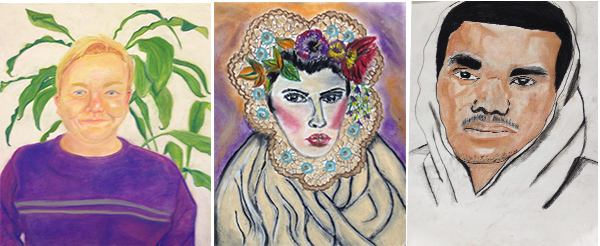I’m an artist, who has quit making art. It’s been over a decade since I last shot a video or painted. Yes, I miss the hell out of it, but I’d rather give it up if I can’t give it my all. That was the decision I made when I started this magazine 11 years ago.
Something happened last year that made me nostalgic about making art: I got roped into teaching a drawing class at a local community college. As a practicing artist, I was never really a drawer. I didn’t sketch out my ideas; I didn’t have an artist’s journal—I’m not sure I even owned a 2B pencil. I found drawing to be tedious, difficult and not very satisfying. I didn’t feel that I was very good at it, so I lost interest every time I started to draw.
Teaching students to do something I was not very good at, or didn’t really have a passion for, made me feel that I might fail as a teacher. I was determined not to let my students catch on to that—I wanted to inspire them. As I delved into YouTube tutorials on perspective drawing, stippled still lifes and shaded spheres, I realized that what I’d really be doing was teaching the students how to see, not necessarily how to draw. About that, I felt very confident.
In this issue we explore drawing as a medium. The artists we feature take drawing to the max, and some of that is very literal, as in Laurie Lipton’s graphite images that can be as large as 12-feet tall. Or Andrea Bersaglieri, whose painstaking renderings of dirt and plants can blow the mind. Abel Alejandre’s portraits capture the sweat on a brow like no photo ever could.
Contributor Betty Ann Brown discusses the superior quality of a drawing over a photograph when it comes to realism. She revisits a time in her past when she was asked to draw artifacts by hand, to supplement the photographs for documentation of a project. Illustrations were found to be more useful as they added dimension to the subject and didn’t flatten the subject as a photograph might.
There are abstract drawings, but most drawing is representational. Is it necessarily a feat to make something look real? Many artists make drawings that might take a backseat to their more prominent medium. Take Wayne Thiebaud or Alex Katz. They are known for their paintings, but their drawings are exquisite; they are more intimate, quiet and special.

West Los Angeles College student drawings, Fall, 2016.
In the first meeting of my drawing class, I asked my students why they had enrolled in it. A common answer was: “I’ve always wanted to draw.” I then asked if it was because they wanted to be able to draw something that looked real? Everybody responded in the affirmative.
I reminded every pupil that when they sign or print their name, they are drawing. They scratched their heads on that one, but came every session with their pencil box and sketch pad. By the end of the semester, every student was able to draw, and their final project—portraits done in pastels—were truly gems. Each drawing was vibrantly unique in execution and detail. I could see each student’s heart and soul in their drawings.
The artists featured in this issue sparked that yearning to create art in me again. Something is very special about drawing. I think you’ll agree that seeing is believing.


